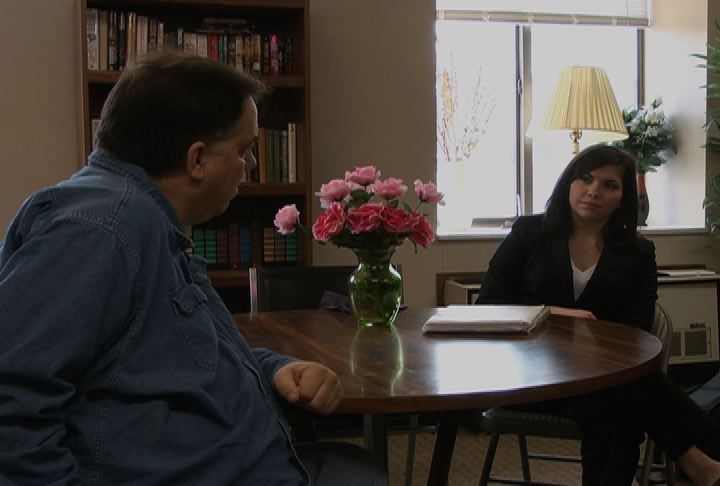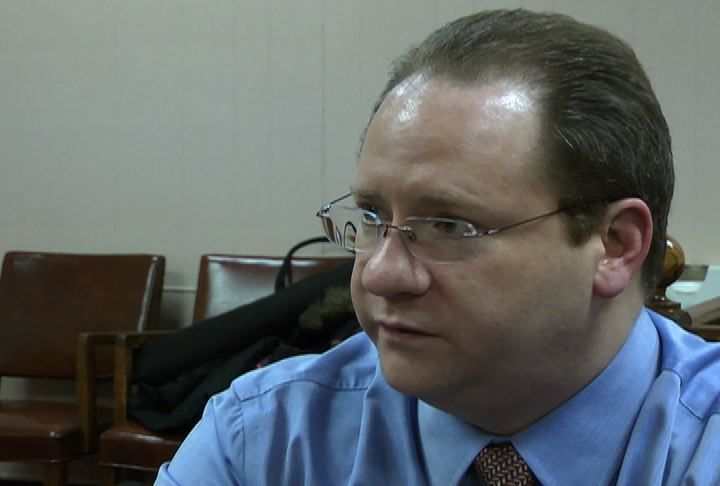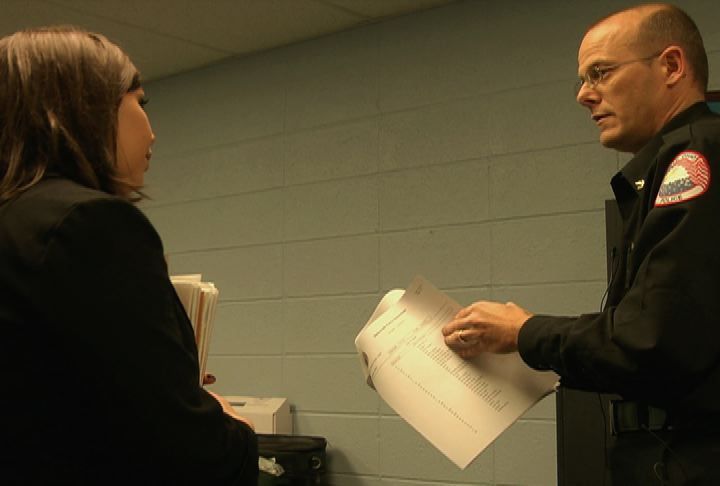Uncategorized
In Focus: Youth Violence in Southeast Ohio – Drugs and Violence
By: Steffany Hiett
Posted on:
WOUB’s Steffany Hiett and Emily Evans delve into the world of drug and alcohol addiction to find out how addiction fuels violence in Southeast Ohio. Athens resident George Might speaks out about how he overcame his own addiction and the consequences of the violence that stemmed from it. Officials from Hocking, Vinton and Athens counties discuss how violence from drug and alcohol addiction has affected their own communities and what they are doing to put an end to it.
The Beginning of a Lifelong Battle
Recovering alcoholic and drug addict George Might began his battle with addiction at age 16. He grew up in Dayton, Ohio and was raised by hard-working parents who he describes as good people.
“I come from a very good family. My dad was an Ohio University graduate of the journalism school. He basically had his own plant in Dayton, McCall’s Plant,” Might said. 
Might was court-ordered to serve in the military at age 16 as punishment for his role in a scuffle with a classmate at his junior prom. After joining the Navy, Might quickly learned that drugs and alcohol were very accessible to servicemen.
“I joined the military and this is where I started drinking. I was only 16 and from the second drink I took I was an alcoholic. And then, I graduated from boot camp, the alcohol and what we thought was cocaine was angel dust and well, we were chasing the women. I was a sailor and had a reputation to keep up,” Might said.
Before Might turned 18 he received an honorable medical discharge and moved home to Dayton. Because of the addiction he had developed in the Navy, his father kicked him out. That’s when Might turned to selling drugs.
“I’d go live in these dumpsters and abandoned houses, whatever. I didn’t smell too good, wore the same clothes,” Might said.
Might moved to Chillicothe, Ohio to seek help from the VA medical center there. He struggled though and continued to lose his battle against crack cocaine. As his addiction worsened, Might became more desperate to get his next fix. There was never enough money to buy the crack cocaine he thought he needed so badly.
“One day I can remember going through five or six hundred dollars, and I walked off the Chillicothe VA and went downtown,” Might said. “I watched this woman get a bunch of money in the bank and grabbed her purse and she didn’t let go and of course the bank was across the street from the courthouse and right next to the courthouse was the sheriff’s department, and this time I did go to prison.”
Might was behind bars for seven years for his drug-fueled act of violence. His story is similar to many others like him in Southeast Ohio who fight the same battle.
Fighting the Good Fight
Hocking County Municipal Court Judge Fred Moses is an example of someone who fights the battle against addiction from the outside looking in. He has made it his personal goal to help rehabilitate addicts so that they can lead a healthy, substance-free life.
 “We’re looking for programs that help people recover from their problems whether they’re drug issues, mental health issues, domestic violence issues and violence issues, they’re all kind of interrelated,” Moses said. “The Supreme Court is encouraged to have more people come into the programs where they receive treatment as an option to going to jail.”
“We’re looking for programs that help people recover from their problems whether they’re drug issues, mental health issues, domestic violence issues and violence issues, they’re all kind of interrelated,” Moses said. “The Supreme Court is encouraged to have more people come into the programs where they receive treatment as an option to going to jail.”
Vinton County Prosecutor Trecia Kimes-Brown is another who deals with rehabilitating addicts within the court system. She says most of the crimes that are committed by drug abusers stem from the desperation to get that next fix.
“We have a huge theft problem [in Vinton County] and a lot of those folks, once we get into court to figure out what the problem is, revolves around I need to steal to get money to buy drugs,” Kimes-Brown said.
In Athens County, Executive Director of Health Recovery Services Dr. Joe Gay works outside of the court system to help abusers beat their addiction. Gay says the recovery process can be difficult and takes a long time.
“Roughly speaking, about 50 percent of the people entering for treatment can finish treatment successfully and seem to be on the right track,” Gay said. “Now some people say that’s terrible, how can you say you’re successful when you’re only helping 50 percent, but actually if you look at some other chronic diseases, and we consider addiction a chronic disease, that 50 percent compliance rate to treatment is about average.”
Those who are out on the streets fighting the war on drugs say that it is difficult to contain the problem with the trafficking throughout Southeast Ohio that supplies abusers. They also deal with the violent consequences of drug and alcohol abuse.
Nelsonville Police Chief Jason Wallace says most of the violence he and his officers see is alcohol-related.
“I’ve never run into a fellow who was high on marijuana who was aggressive in any way or combative, but turn the clock and they have two or three beers and the guy’s ready to take on everybody and there’s more violence and more injury,” Wallace said.
Inside the Mind of an Addict
What’s most difficult for non-drug users to understand is the hopeless feeling that comes with addiction. It is nearly impossible for an addict to see the light at the end of the tunnel while they are intoxicated.
“I think that there’s a misconception that being an addict is a voluntary act. In a way it’s not. Now using substances is a voluntary act. Very few people are forced to take their first drink,” Gay said. “But once a person who is prone to addiction starts using, that use makes changes in their brain and it sets off this cycle of craving for the substance and so it really becomes not voluntary after a while.”
Moses says he thinks the problem is getting increasingly worse.
“It’s getting so bad people don’t realize, I mean we have some people in our drug court who have lost their mother, their sisters and they still can’t quit using. It’s a grip that if you don’t experience [you won’t understand it],” Moses said. “I never want to understand it, I hope not to understand it.”
Recovery experts say the drug user constantly chases their first high. It’s the most euphoric of all highs, but it can never happen more than once.
“I’ve spoken to a lot of addicts and a lot of them start off with the legitimate use of prescription pain medication for health issues, be it an injured back, broken leg, arm, they get addicted to it and their use increases and the desperation of that addiction leads them to steal from family members and friends,” Wallace said.
Crime rates throughout Southeast Ohio show the cities of Logan and Nelsonville ranking among the highest, while the college town of Athens is one of the lowest.
“This is an epidemic. It’s a flat epidemic. These people cannot get off these drugs. These people who are addicted to it are stuck on it, they can’t get off of it. The withdrawals are too severe, they’re scared of it, they’re emotionally attached to it,” Moses said.
In the small town of McArthur alone, thefts made up almost three-quarters of the crime according to data from 2011.
“We do have a lot of thefts related to drug offenses in the country. We have a lot of rural areas in our in our country that people sort of scope out and think they’re not going to get caught,” Kimes-Brown said. “The fall out is huge. It affects every aspect of the community.”
In the areas that are overrun by drugs and alcohol issues, officers are always on alert for the risks of drug violence with every case they come across.
“We can walk into a room and see that one person is not acting the same and the same goes for human behavior. You’re around people and the slurred speech and the eyes and the statements they’re making just don’t make sense,” Wallace said.
“Most of us go home at the end of the day and come back knowing that we are going to have to deal with people that day who have gotten better and people that day who have gotten worse and people who are status quo and so it does seem to be never-ending,” Kimes-Brown said. “But yet, you have those days where someone is better and so you have to look at those days.”
Recovery and Rehabilitation
Although it can be extremely difficult, experts say the recovery process is the most important part of the relentless, never-ending cycle of addiction. Often, those who commit acts of crimes as a result of drug addiction are unsuccessful in their early rehabilitation attempts.
“You have to deal with the physical effects of the drug, which is a relatively simple process with alcohol. With opiates, it’s a persistent factor. Besides that, you have to deal with other issues, particularly lifestyle issues. Who the person associates with, what they do with their time and things like that,” Gay said.
In 1980, nearly one in four people in prison were drug offenders, and by 2007, that number increased to more than one in three. Drug-related deaths have more than doubled since the early eighties. There are more deaths, illness and disabilities from substance abuse than from any other preventable health condition.
“The rehabilitation services in the prisons are probably insufficient. There’s a waiting list that is years long so you have to be in prison for some years to get a slot in one of the rehab programs in prison,” Gay said. “But they’re making real efforts to right now to fix that system.”
As for recovering addict George Might, he considers himself one of the lucky ones. Although he has struggled with multiple relapses over the years, the recovery program at the John Clem Recovery House in Athens has been his saving grace. Might entered the program a few years ago and has made significant strides toward sobriety since. Might is proud to say he is more than five months sober today.
“It’s not me it’s this program. If it were me I’d have done screwed up. I’d just be homeless up in Dayton,” Might said. “But I don’t think I would have made it that far, I’d have had a heart attack by now. I’d probably have heard taps by now in a Dayton cemetery.”

